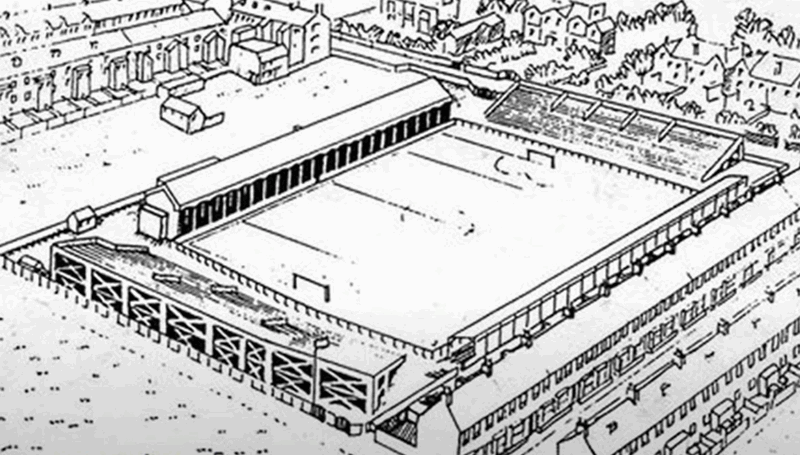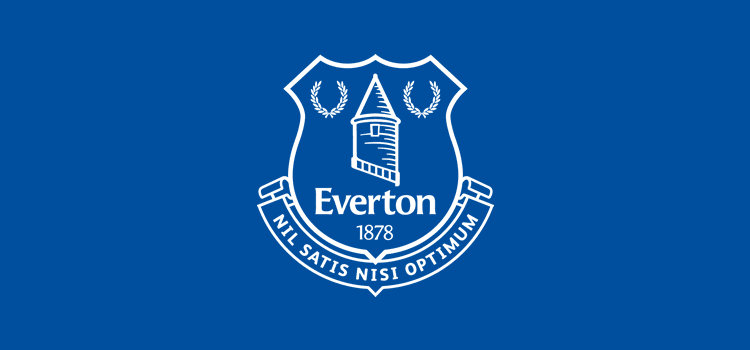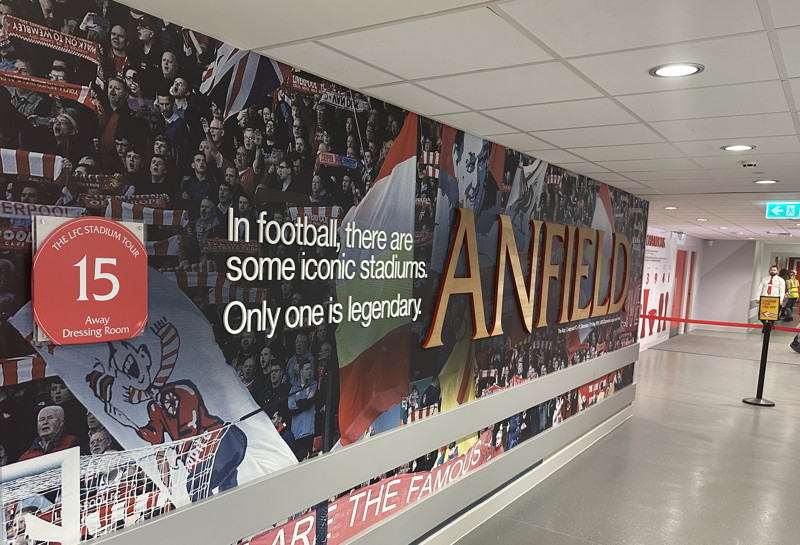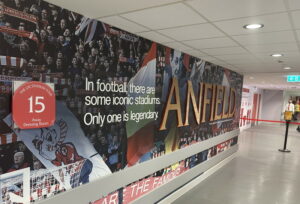
Mention Anfield to the majority of football supporters from around the world and they will know exactly who plays there. The home of Liverpool Football Club since its formation in 1892, Anfield has grown to become one of he most famous stadiums on the planet. Known for its incredible atmosphere, especially on European nights, the ground has become sewn into the very fabric of the team that plays its games there.
What not everyone will know is the fact that it was actually the home of Everton long before Liverpool even existed as a team, with the Reds only coming into existence when the Blues moved out.
When Everton were first formed they were known as St. Domingo’s FC, playing that matches at Stanley Park. By 1882 too many people were turning up to watch them, so they moved to Priory Road before eventually shifting to Anfield Road, the land of which was owned by local brewers.
When the club chairman decided to up the rent, however, Everton, as the side was known by then, decided that they didn’t want to pay the extra money and so moved out. Left with a stadium to fill, the chairman, John Houlding, created a team of his own, with that side being Liverpool FC.
Everton’s Formative Years

Having decided to play games on a field just off Priory Road, the club that would become Everton constructed a small stand as well as a dressing room there. The first game played was something of a disappointment, however, with gate receipts worth the equivalent of just 70 pence taken. Things did improve for the Blues in the months that followed, with Everton defeating Earlestown in the Liverpool Cup final in 1884. The bad news was that this success caused trouble, with the owner of the field, Mr. J. Cruitt, unhappy with the noise and the unruly spectators that turned up.
Saturday 27th September 1884 Everton V Earlestown. First Everton match at Anfield .
— Mia Culpa 🎸 🇺🇦 🇵🇸 🇮🇱 (@UBSixT) October 30, 2013
The club was told to find another home, with the decision taken to shift proceedings to land that was owned by local brewers. The Orrell brothers leased it to Everton in exchange for an annual donation to Stanley Hospital, with most of the money the Blues had available being spent on turning the area into one that was suitable for a football club to play its matches on.
Everton officials were joined by both players and supporters, who picked up hammers, spades and wheelbarrows in order to turn a pasture field into an actually space that was suitable for football.
Anfield The Stadium Is Built

In spite of all of the effort put into making Anfield a viable place to play football matches, the club didn’t actually own the ground. The first match took place on the 27th of September 1884, which was also against Earlestown. In the years that followed, the Blues decided to become a professional football club, playing their first Football League fixture against Accrington Stanley there on the eighth of September 1888.
Three years later and Everton were crowned English champions, winning their first championship in front of crowds that were as large as 20,000.
The success was great for supporters, but for the club itself it brought more trouble. Just as the owner of the fields decided that he didn’t want the noise and the trouble that came with hosting football matches on a regular basis, so too did Everton’s title win result in an owner choosing to alter how things were working. John Houlding, the chairmen of Everton at the time, had bought the ground that Everton played matches on from the Orrell brothers. In light of the larger grounds turning up to watch the football, he wanted more money from the club and asked for it.
Everton, however, weren’t happy to pay it. On the 25th of January 1892, George Mahon grew tired of Houlding’s demands and told members of the club that there was an option to buy Mere Green Field. Situated on the northern side of Stanley Park, it had been described as having ‘degenerated from a nursery into a howling desert’, with the feeling being that Everton would be better off having their own ground that they could dictate the future of. There was doubtless also a bit of a hope that Houlding might back down, but rather than doing so he simply created a team of his own to play in his ground.
On this day back in 1891, the League title heads to Anfield for the first time!#UTFT #NSNO #TheOriginals #Everton pic.twitter.com/c75viirig4
— Colm Kavanagh (@KavanaghsArklow) March 14, 2023
The stadium that had been built by Everton was impressive. In fact, it was considered to be of international standard at the time, with the British Home Championship match between England and Ireland being played there in 1889. Although around 8,000 people or so turned up to matches on a regular basis, it could host as many as 20,000 and did so on occasion.
It is little wonder, therefore, that Houlding decided that it was too good to stand empty. Instead, he created a team that went by the name of Liverpool F.C. and Athletic Grounds Ltd, later becoming simply Liverpool.
The Flagpole
In 1891, before the dispute over the rent being asked for by Houlding, an addition was made to the stadium that remained a feature for years to come. A 50 foot flagpole that was the top mast of of the SS Great Eastern, the ship of Isambard Kingdom Brunel was bought by Everton from a shipyard in Rock Ferry on the Wirral.
The flagpole was floated across the River Mersey before being hauled up to Anfield by men on a team of horses. It was position at the corner of the ground where Kemlyn Road and Walton Break Road meet and a flag was soon flying from it.
Anfield of old. Flagpole corner by the artist Steven Scholes. #LFC #Liverpool #Art #Artist pic.twitter.com/BqvVmKqusG
— Nicky Allt (@NickyAllt) August 13, 2022
Later that year, the flag that was flying from the flagpole was the First Division championship flag, which Everton had won at the third time of asking. In the years that followed, a new flag ended up being flown from the flagpole when Everton left the stadium and were replaced by Liverpool.
Since then, numerous flags have flown from the famous flagpole, which was installed to give the football ground a striking feature and a focus of attention. Interestingly, in 1906 an article appeared in the Sheffield Evening Telegraph saying that the flagpole had actually been on the Royal Yacht HMY Victoria and Albert II.
John Houlding
Evertonians might well try to paint John Houlding as a Tory capitalist who wanted to make a quick buck out of the Blues following their increased popularity. Liverpool fans, meanwhile, would no doubt suggest that it was Everton’s cheapskate nature that caused the problems, rather than anything Houlding did.
The truth, of course, probably lies somewhere in the middle. Money was the main cause of the tension, although it didn’t help that Houlding was a brewer and many members of the Everton staff were also part of the Temperance Party, objecting to drink from a moral standpoint.
15 March 1892:
Everton FC general meeting decided to part their ways with John Houlding and Anfield. Houlding and his closest football friends held a meeting at his house and they decided to form a new team: Liverpool Football Club.#LFChistory_net #LFC pic.twitter.com/g9Up7clSuu— LFChistory.net (@LFChistory) March 15, 2022
When Mahon managed to persuade the rest of the Everton board to move to Goodison Park, he did so after making sure that it was club policy that ‘intoxicating liquor’ would not be sold in the ground and that brewers would not finance the team. He must have been rolling in his grave years later when the club signed a sponsorship deal with Chang, the Asian beer manufacturer… Houlding had been Everton’s saviour when they were asked to leave Priory Road, investing his own money to allow the club to continue. When they won their first championship, he wanted to start getting some of it back.
Having only been paid 1% of takings when the club was formed, Houlding wanted to increase that to 4% in order to reflect the money that the regular gates of 14,000 to 15,000 that Everton were getting. Houlding had come up with a scheme to make Everton into a company that could buy the stadium, but the members weren’t happy and felt that they were being coerced into doing so. For Houlding, the desire to keep people turning up at Anfield was clear, given the fact that he owned the Sandon Hotel, which was located close to the stadium. Everton might move, but he wouldn’t.

